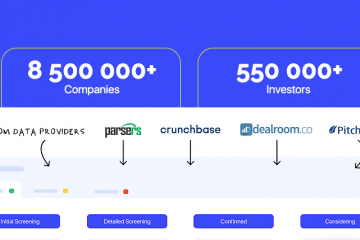Deep learning & Machine learning: what’s the difference?
What is the difference between Deep learning and Machine learning? How similar or different are they?
Machine learning and Deep learning are 2 subsets of artificial intelligence (AI) that have been actively attracting attention for several years.
Interesting facts and statistics Deep learning and Machine learning:
- AI specialist salary is equal to the cost of Roll-Royce Ghost Series II 2017 (according to the New York Times);
- Is there a chance of losing your job due to AI progress? According to a recent PwC report – it is possible. They suggest that by about 2030, 38% of all jobs in the US could be replaced by artificial intelligence and automation technology;
- The first AI program “The Logic Theorist” was created in 1955 by Newell & Simon (World Information Organization);
- Researchers predict that by 2020, 85% of customer engagement will be non-human (Gartner);
- The market for artificial intelligence or machine learning will grow to $ 5.05 billion by 2020 (Motley Fool);
Curious? Now let’s try to understand what is the real difference between Deep learning and Machine learning, and how you can use them for new business opportunities.
Deep learning & Machine learning
Machine learning is a subset of artificial intelligence associated with creating algorithms that can change themselves without human intervention to get the desired result – by feeding themselves through structured data.
Deep learning is a subset of machine learning where algorithms are created and function similarly to machine learning, but there are many levels of these algorithms, each providing a different interpretation of the data it conveys. This network of algorithms is called artificial neural networks. In simple words, it resembles the neural connections that exist in the human brain.
Example:
You have a collection of photos of dogs and cats. Suppose you need to identify images of dogs and cats separately using machine learning algorithms and deep learning neural networks.
Solution using Machine learning:
To help the machine learning algorithm classify images into collections according to two categories (dog and cat), it needs to present these images first. But how does the algorithm know which one is which?
The answer to this question is the availability of structured data, as described above in the definition of machine learning. You simply mark the images of dogs and cats in order to determine the characteristics of both animals. These data will be sufficient for training a machine learning algorithm, and then he will continue to work on the basis that they understand the markings and klassificeret millions of other images of animals both on the grounds that he had studied earlier.
Solution using Deep learning:
Deep learning neural networks will use a different approach to solve this problem. The main advantage of deep learning is that it doesn’t necessarily need structured / tagged image data to classify two animals. In this case, the input data (image data) is sent through different levels of neural networks, and each network hierarchically determines the specific features of the images.
This is similar to how our human brain works to solve problems – running queries through different hierarchies of concepts and related questions to find the answer.
After processing the data through different levels of neural networks, the system finds appropriate identifiers to classify both animals by their images.
So, in this example, you can see that the machine learning algorithm requires labeled/structured data to understand the differences between images of cats and dogs, study the classification, and then draw a conclusion.
On the other hand, the deep learning network was able to classify the images of both animals from data processed in the layers of the network. This did not require any labeled/structured data, as it relied on different outputs processed by each layer, which were combined to form a single way of classifying images.
Differences between deep learner and machine learning:
- The main difference between deep learning and machine learning is due to the way data is presented in the system. Machine learning algorithms almost always require structured data, while deep learning networks rely on layers of ANN (artificial neural networks).
- Machine learning algorithms are designed to “learn” to act by understanding labeled data and then use it to produce new results with more datasets. However, when the result is incorrect, there is a need to “teach them”.
- Deep learning networks do not require human intervention, as multilevel layers in neural networks place data in a hierarchy of different concepts, which ultimately learn from their own mistakes. However, even they can be wrong if the data quality is not good enough.
- Data decides everything. It is the quality of the data that ultimately determines the quality of the result.
It is worth noting:
- Because machine learning algorithms require bulleted data, they are not suitable for solving complex queries that involve a huge amount of data.
- Although in this case we have seen the use of Deep learning to solve a minor query, the real use of deep learning neural networks is on a much larger scale. In fact, given the number of layers, hierarchies, and concepts that these networks handle, Deep learning is only suitable for performing complex calculations, not simple ones.
- Both of these subsets of AI are somehow connected to data, which makes it possible to represent a certain form of “intelligence.” However, you should be aware that deep learning requires much more data than a traditional machine learning algorithm. The reason for this is that deep learning networks can identify different elements in neural network layers only when more than a million data points interact. Machine learning algorithms, on the other hand, are capable of learning by pre-programmed criteria.
Due to the growth of various technologies, businesses are now looking for technology consulting companies to find what is best for their business.
The development of artificial intelligence also generates growth in software development services, IoT applications and blockchain. Currently, software developers are exploring new ways of programming that are more prone to deep learning and machine learning.


